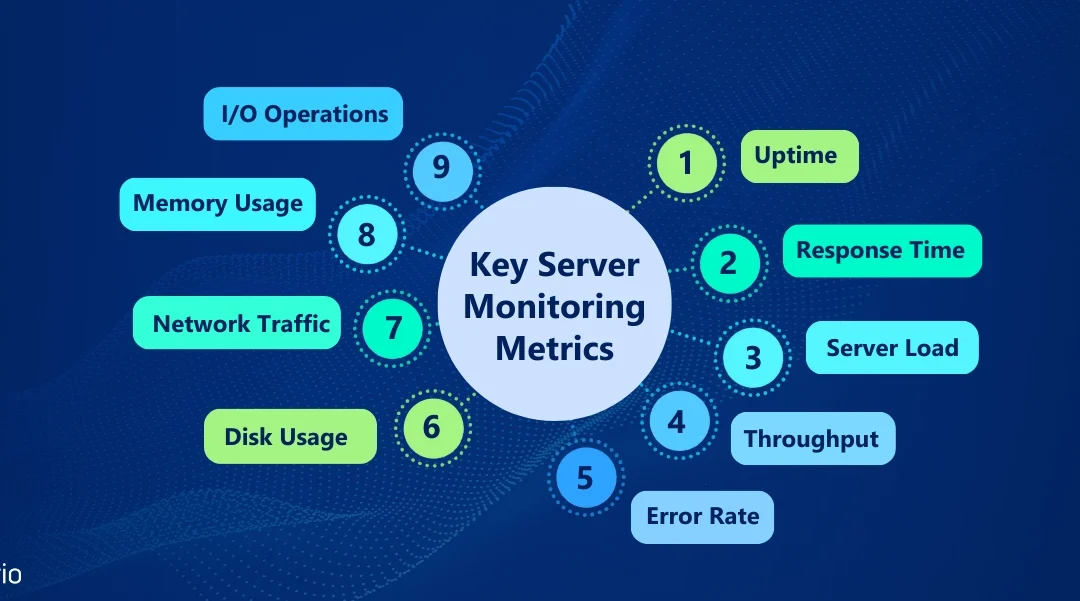In today’s digital age, IT server management is the backbone of efficient business operations. Whether you’re running a small business or managing a global enterprise, your servers handle critical tasks such as data storage, application hosting, and communication systems. Without proper server management, businesses risk facing downtime, data breaches, and performance bottlenecks.
This comprehensive guide will explore the core functions, benefits, and best practices of IT server management to help businesses maintain reliable and secure operations.
What Is IT Server Management?
Definition and Purpose
IT server management refers to the process of maintaining, monitoring, and optimizing servers to ensure smooth business operations. It encompasses all activities involved in overseeing server performance, including hardware and software maintenance, security protocols, and troubleshooting issues.
Key Components
- Hardware Management: Ensuring physical servers are functioning properly, including cooling systems and power supply.
- Software Management: Managing operating systems, server applications, and firmware updates.
- Monitoring and Alerts: Continuously tracking server performance and receiving alerts for potential issues.
By implementing effective server management, businesses can avoid operational disruptions and ensure their systems are running optimally.
Core Functions of IT Server Management
Monitoring and Maintenance
Regular monitoring of server performance is crucial to identify and address issues before they escalate. Maintenance tasks include updating software, managing storage capacity, and replacing outdated hardware.
Security Management
Cybersecurity threats are a constant challenge for businesses. IT server management involves implementing firewalls, encryption, and access controls to protect sensitive data and prevent unauthorized access.
Performance Optimization
Servers must handle increasing workloads efficiently. Performance optimization ensures servers can process data quickly and support business applications without delays.
Backup and Recovery
Data loss can be catastrophic. IT server management includes setting up automated backup systems and creating recovery plans to minimize downtime in case of failure.
Benefits of Effective Server Management
Enhanced Security
With robust server management, businesses can protect against cyber threats, ensuring the safety of sensitive information and maintaining compliance with data regulations.
Cost Efficiency
Proper management minimizes unexpected repair costs and reduces energy consumption by optimizing server usage. This leads to significant savings over time.
Reliable Operations
Well-maintained servers provide consistent performance, reducing downtime and ensuring that employees and customers can access systems without interruption.
Scalability
As businesses grow, their IT needs expand. Effective server management allows companies to scale their infrastructure seamlessly, ensuring they can handle increased demand.
Tools and Best Practices for IT Server Management
Popular Tools
- SolarWinds Server and Application Monitor: Tracks server performance and detects issues in real time.
- Nagios: An open-source tool for monitoring server health, network performance, and application uptime.
- Puppet Enterprise: Automates server management tasks like updates and configurations.
Best Practices
- Regular Audits: Periodic assessments of server health and performance to address vulnerabilities.
- Automation: Use automated tools for repetitive tasks like backups and updates to reduce manual errors.
- Documentation: Maintain detailed records of server configurations, changes, and maintenance schedules.
- Training Staff: Ensure IT teams are skilled in the latest server management tools and techniques.
Future Trends in IT Server Management
Cloud Computing
The rise of cloud-based servers is reshaping IT server management. Businesses are increasingly adopting hybrid models that combine on-premise servers with cloud infrastructure to improve flexibility.
Artificial Intelligence
AI-powered tools are automating server monitoring and predictive maintenance, reducing the need for manual intervention and enabling faster issue resolution.
Focus on Sustainability
Green IT initiatives are encouraging businesses to optimize server energy consumption, reduce heat output, and recycle outdated hardware.
Conclusion
Effective IT server management is a cornerstone of business success, ensuring secure, efficient, and reliable operations. By leveraging modern tools, adhering to best practices, and staying ahead of trends like cloud computing and AI, businesses can optimize their infrastructure to meet evolving demands.
Investing in IT server management not only safeguards your data but also enhances productivity and scalability, empowering your business to thrive in a competitive digital landscape.
FAQs
1.What is IT server management?
IT server management is the process of maintaining and optimizing servers to ensure secure, reliable, and efficient operations for businesses.
2.Why is server management important?
Server management is vital for preventing downtime, ensuring data security, and maintaining the performance of critical business systems.
3.What tools are used in IT server management?
Popular tools include SolarWinds, Nagios, and Puppet Enterprise for monitoring, automation, and configuration management.
4.Can small businesses benefit from server management?
Yes, small businesses rely on server management to maintain cost-efficiency, scalability, and secure operations without the need for extensive IT teams.
5.What is the future of server management?
The future lies in cloud computing, AI-driven automation, and sustainable practices that optimize server usage and reduce environmental impact.

